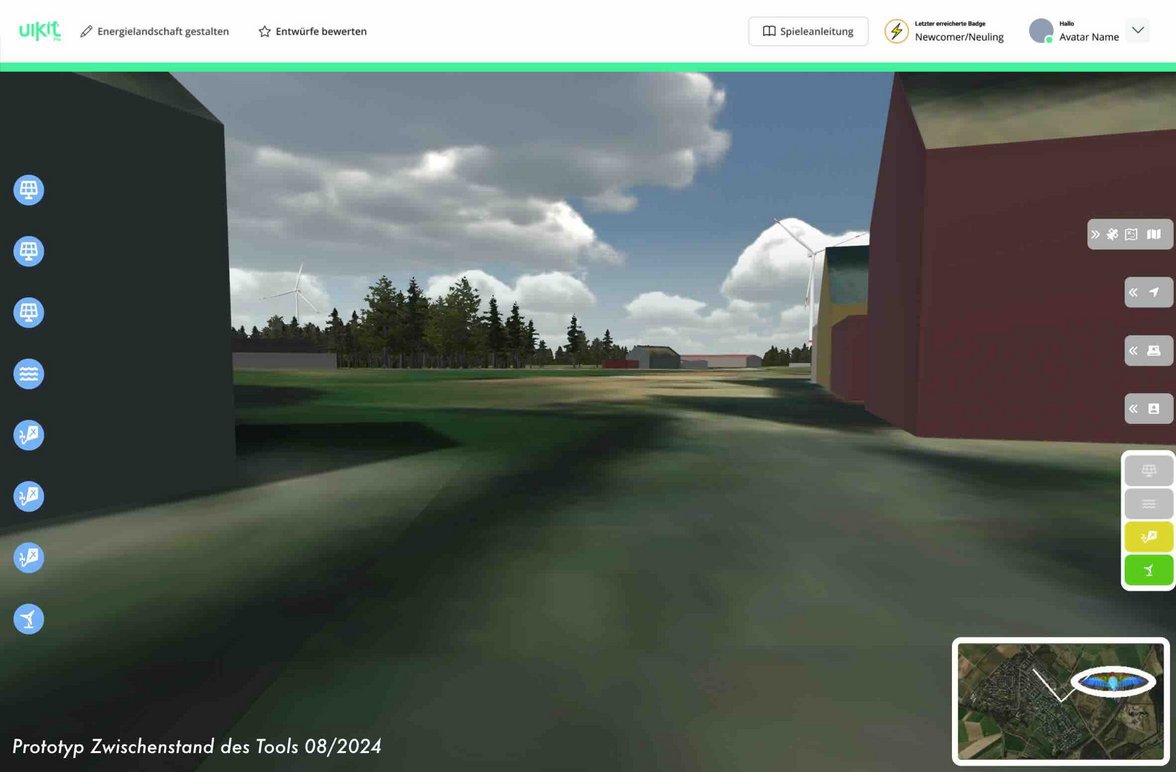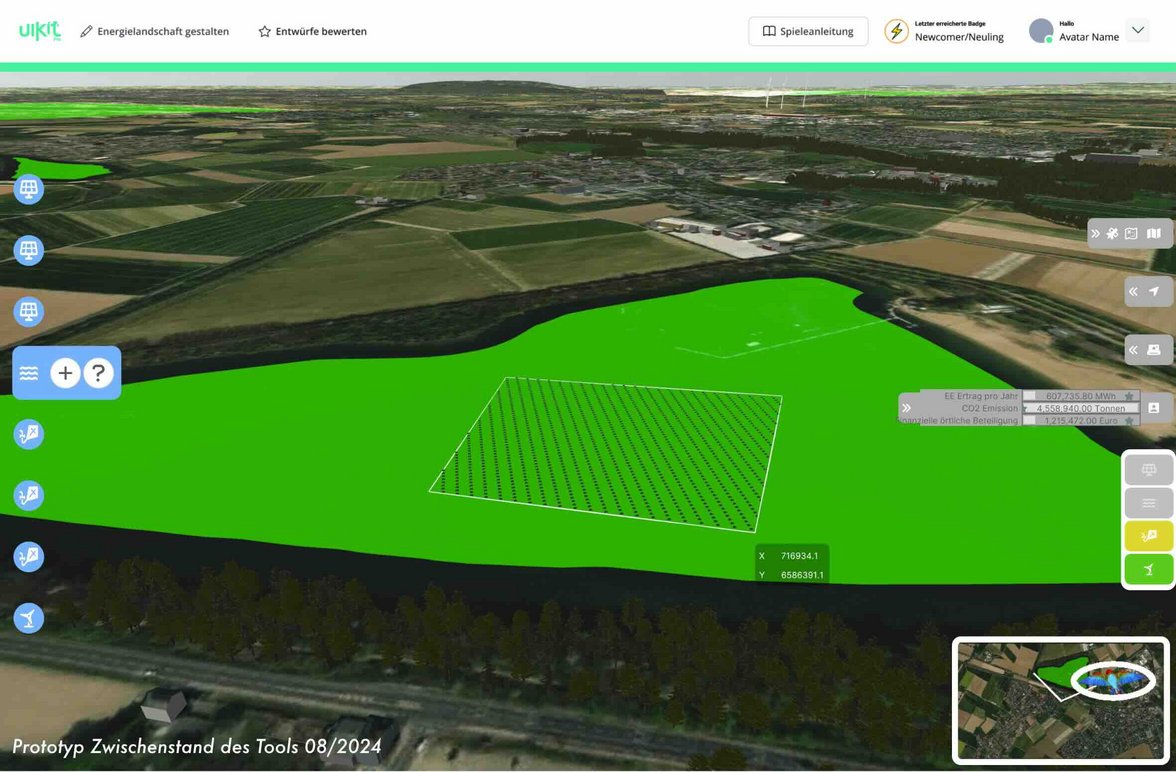GrowFlowFly
Collaborative project: Acceptance potential for area-extensive renewable energies - APV, FPV, AWE in comparison with established renewable energy technologies
Agri-photovoltaics (APV), floating photovoltaics (FPV) and airborne wind energy (AWE) are technologies that have so far been largely unknown in the landscape and pose specific questions about social acceptance despite, but also precisely because of their particularly extensive use of space and tendency towards ubiquitous, but also temporary, spatial distribution. In addition to cognitive knowledge and rational arguments, perceptions, aesthetic perceptions and judgments as well as social discourses and narratives play a role here.
In this project, design alternatives of APV and FPV are created at the regional scale and linked in two test areas (former coalfields) with quantitative and qualitative context data on multiple benefits (food production, nature conservation, visual effects, enjoyment of nature, experience, etc.) and the resulting energy balances.
These parameterized land use modules, supplemented by design variants of AWE, are integrated into a gamification tool for simulation (virtual reality, augmented reality) in citizen participation. From the two-stage demonstration of the tool as part of an experimental participation, landscape-related rules are extracted that can be derived from the specific spatial concepts of the users of the two test regions. These will be evaluated in the accompanying survey.
According to the research hypothesis, such rules, which may concern aspects of APV, FPV and AWE such as structural types and dimensions, but also landscape positioning, structural allocations, functional mixes, periods of use, etc., can be condensed in the form of new cultural landscape structures, spatial strategies and accompanying narratives. These provide the basis for communicative building blocks of a social discourse on future technologies in everyday landscapes and thus also gain relevance as extended, collective acceptance factors.

